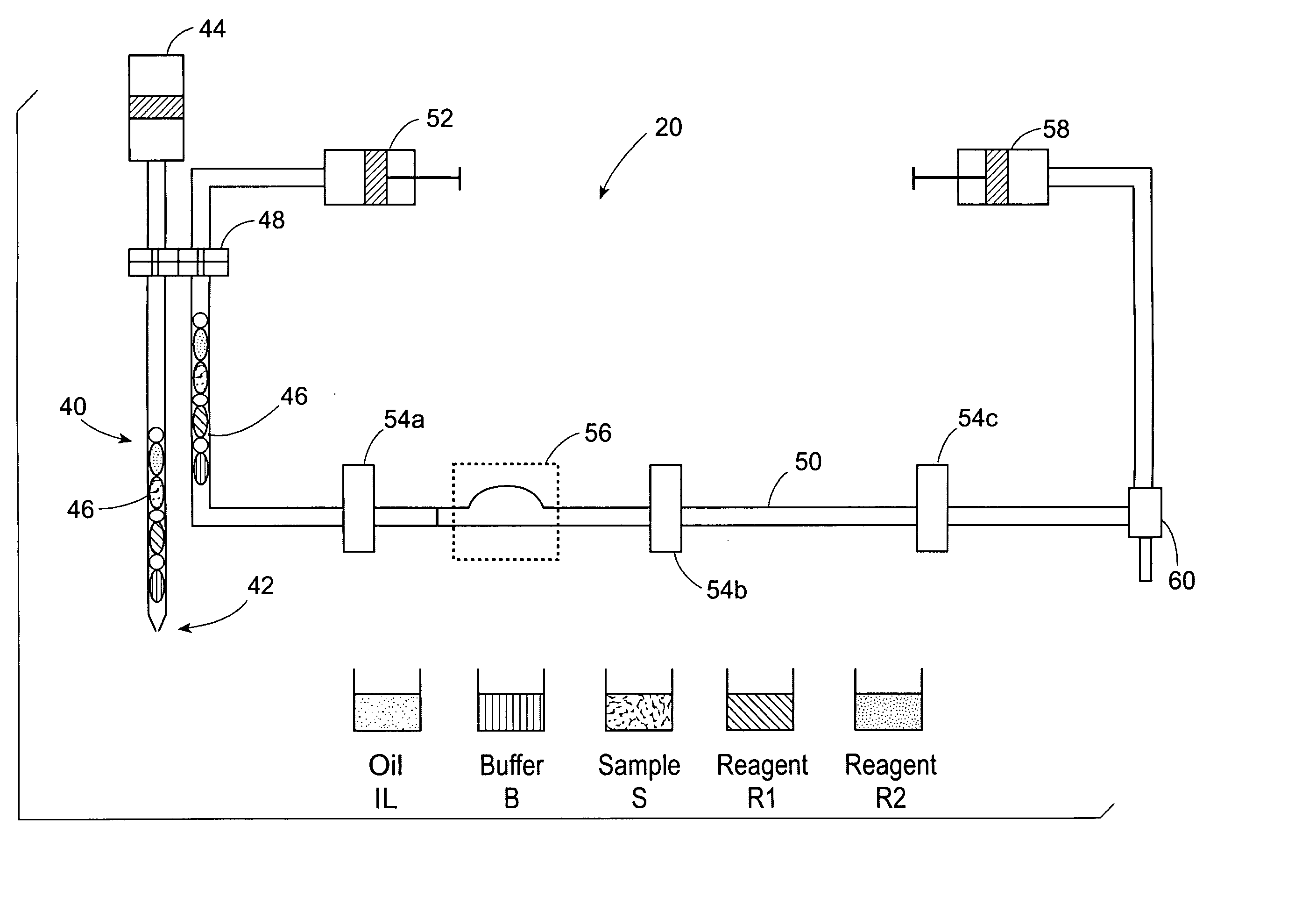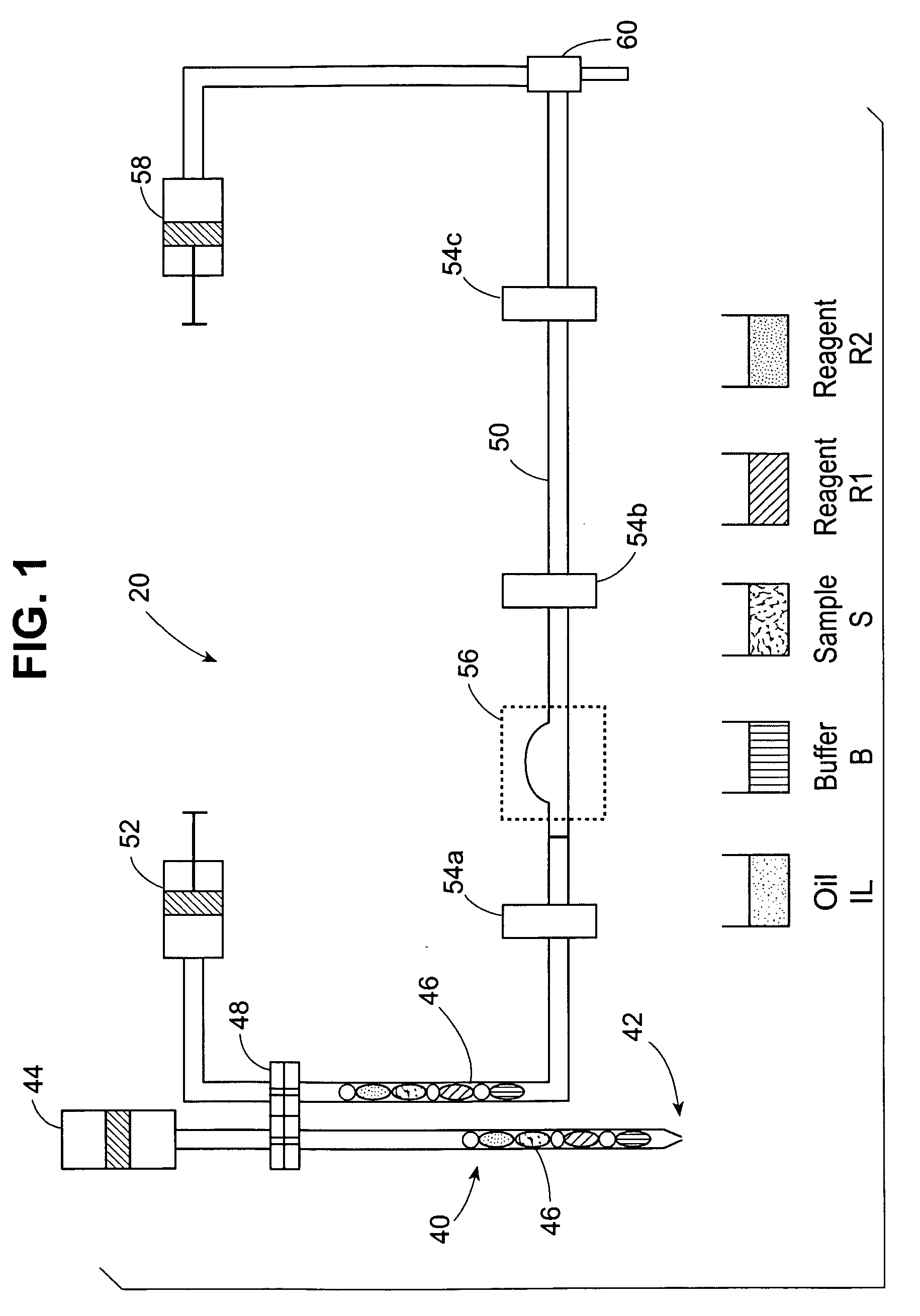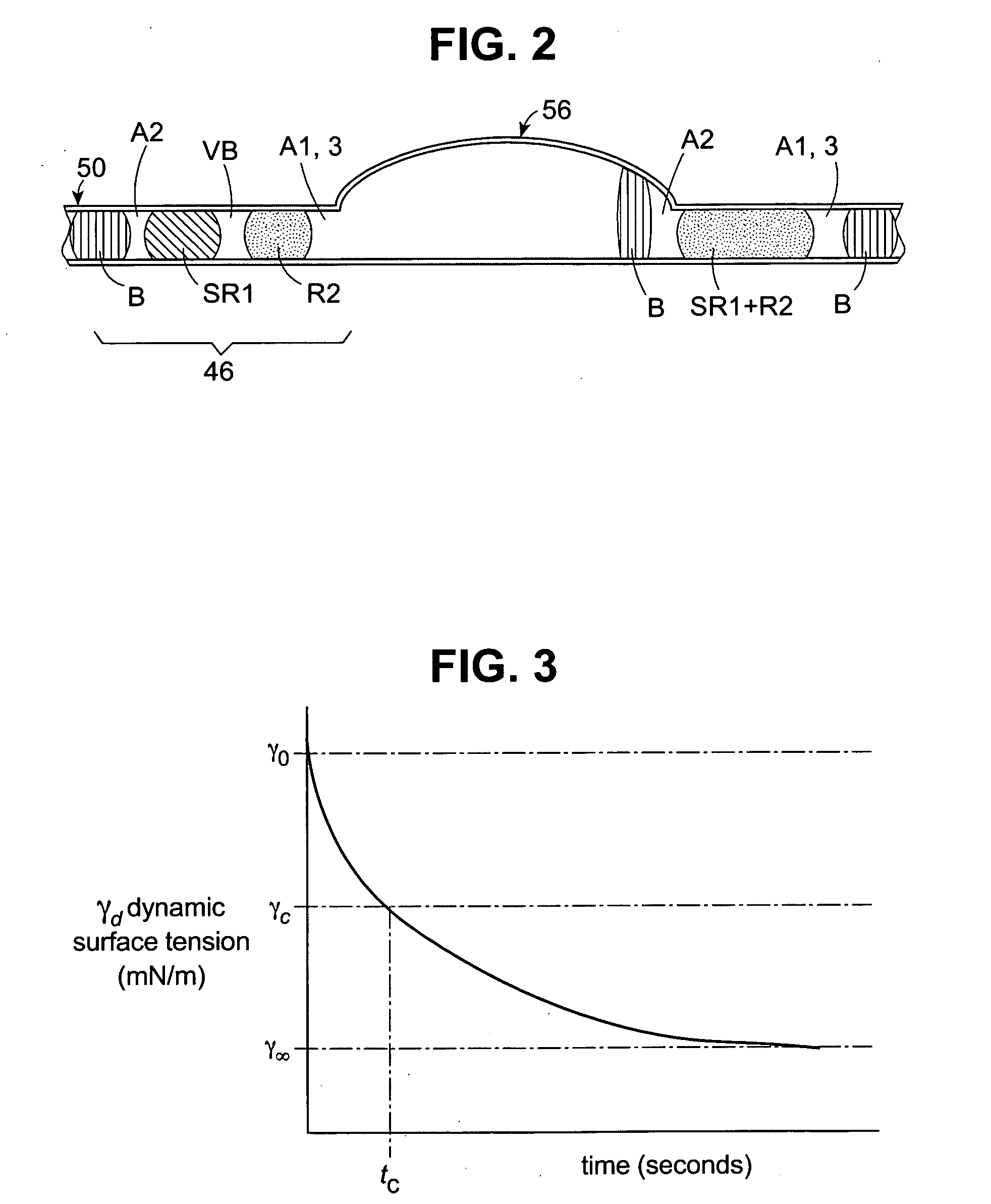Automated clinical analyzer reagent formulation
a clinical analyzer and reagent technology, applied in the field of automatic clinical analyzer reagent formulation, can solve the problems of reducing the cost-effectiveness of the automated clinical analyzer system, anomalous analytical results, and failure of the hydraulic line analysis lin
- Summary
- Abstract
- Description
- Claims
- Application Information
AI Technical Summary
Problems solved by technology
Method used
Image
Examples
example 1
[0079] Double test runs with water solutions of Triton® X-100 as model reagents were carried out on the Advia IMS™ Automated Clinical Analyzer (Bayer Corp.). A double test run means that during one experimental run, only two types of test packages were aspirated alternately in series for at least 120 times.
[0080] In this example, aqueous Triton® X-100 surfactant solutions without biological components were used as model reagents R1 and R2. Different concentrations of Triton® X-100 solutions were used, but the concentration was always the same for both model reagents R1 and R2 of any test package. Consequently, the static and dynamic surface tension values for both model reagents R1 and R2 of any test were identical. The identical surfactant concentration in R1 and R2 results in identical dynamic surface tension for both reagents. Three different test packages were investigated wherein the Triton® X-100 concentration in R1 and R2 was 0.1, 1.0 and 10 g / l. For all test packages, the s...
example 2
[0083] Single test runs with Triton® X-100 solutions as model reagents were carried out on the Advia IMS Clinical Analyzer. A single test run means that during one experimental run, only one type of test package was aspirated in series for at least 120 times. In this example, the Triton® X-100 concentration in both model reagents R1 and R2 for each test package was different. Four types of test packages were investigated. They were characterized by different Triton® X-100 concentration in both reagents R1 and R2, that is, R1 / R2: 10 / 1, 10 / 0.5, 1.0 / 1.0 and 1.0 / 10, in grams / liter (g / l).
[0084] For all test packages, the same surfactant solution was chosen for sample S and reagent R1. Hence, the surface properties of capsule SR1 was the same as that of reagent R1. The static surface tensions of all model reagents was approximately equal, about 32 mN / m at 37° C. In contrast, the dynamic surface tensions of these model reagents vary as a function of their Triton® X-100 concentration. See ...
example 3
[0091] Double test runs with Triton® X-100 solutions as model reagents were carried out on the Advia IMS, similar to the procedures in Examples 1 and 2. During each run, two types of tests, ai and bi were conducted, wherein i ranges from 1-5. Test packages “a” and “b” were aspirated alternately in series. For all tests, the same surfactant solution, Triton® X-100, was chosen for sample S and reagent R1. Hence, the surface properties of capsule SR1 was the same as that of reagent R1.
[0092] Different surfactant concentrations were chosen for R1 and R2 for all test packages except a4 and b4. The test results are given in Table 6.
TABLE 6Test Packages And τc(SR1)τc(R2) Values.Test packageTriton ® X-100 concentration in SR1Triton ® X-100 concentration in R2τc (SR1)τc (R2)τc(SR1)τc(R2) a10.11.0>3.50.27>13a20.21.0>3.50.27>13a30.51.01.450.275.4a41.01.00.270.271.0a5101.00.27b11.00.10.27>3.5b21.00.20.27>3.5b31.00.50.271.450.19b41.01.00.270.271.0b51.0100.2714
[0093] The static su...
PUM
 Login to View More
Login to View More Abstract
Description
Claims
Application Information
 Login to View More
Login to View More - R&D
- Intellectual Property
- Life Sciences
- Materials
- Tech Scout
- Unparalleled Data Quality
- Higher Quality Content
- 60% Fewer Hallucinations
Browse by: Latest US Patents, China's latest patents, Technical Efficacy Thesaurus, Application Domain, Technology Topic, Popular Technical Reports.
© 2025 PatSnap. All rights reserved.Legal|Privacy policy|Modern Slavery Act Transparency Statement|Sitemap|About US| Contact US: help@patsnap.com



